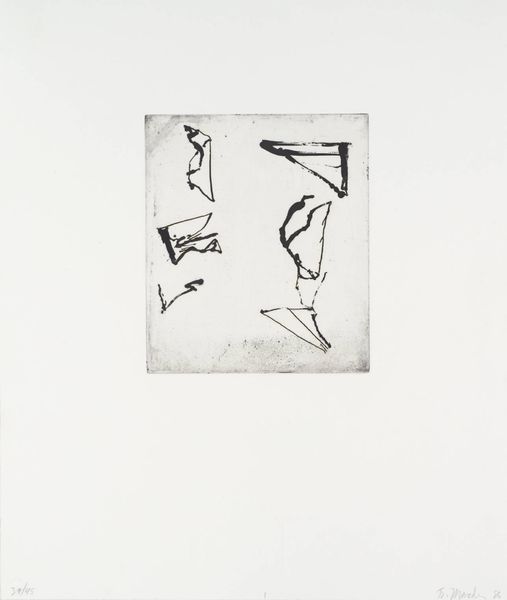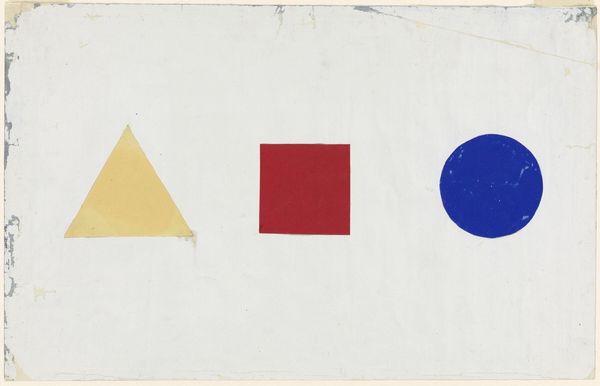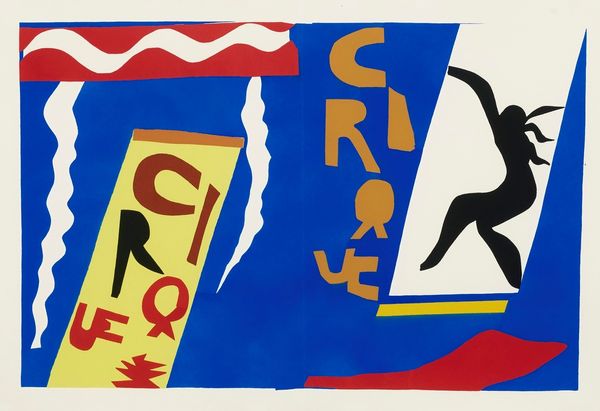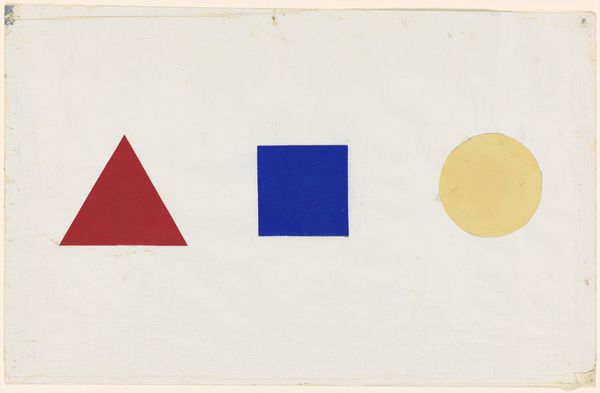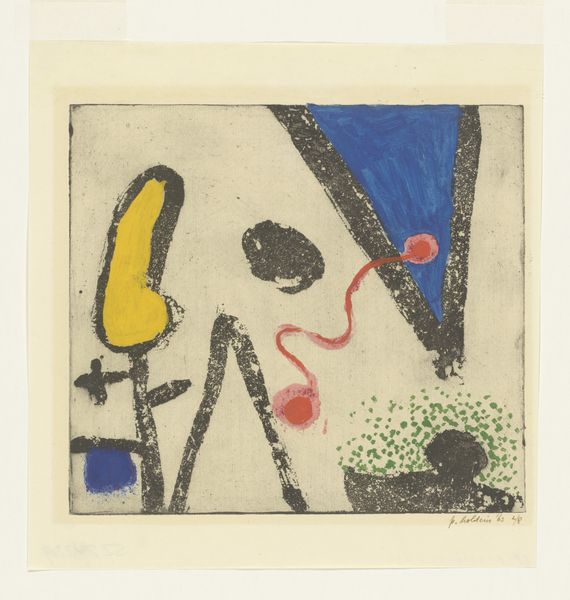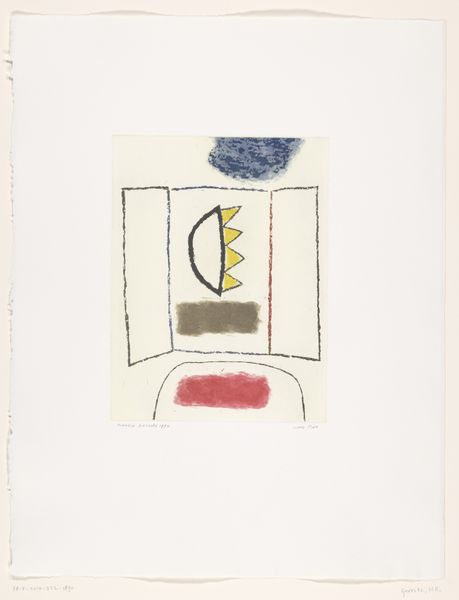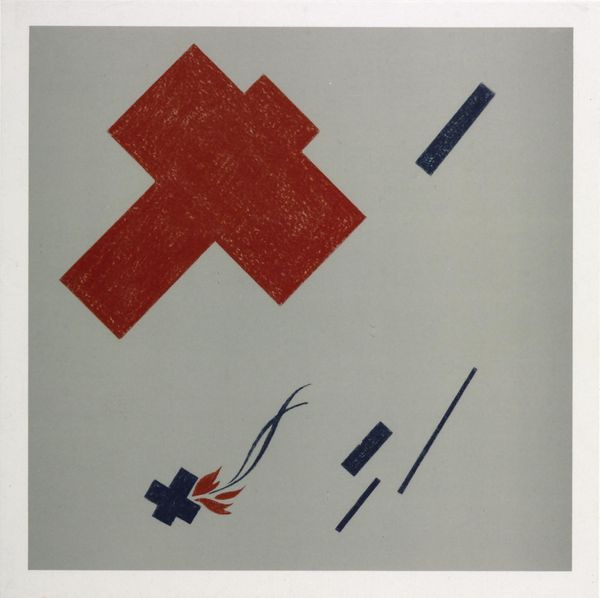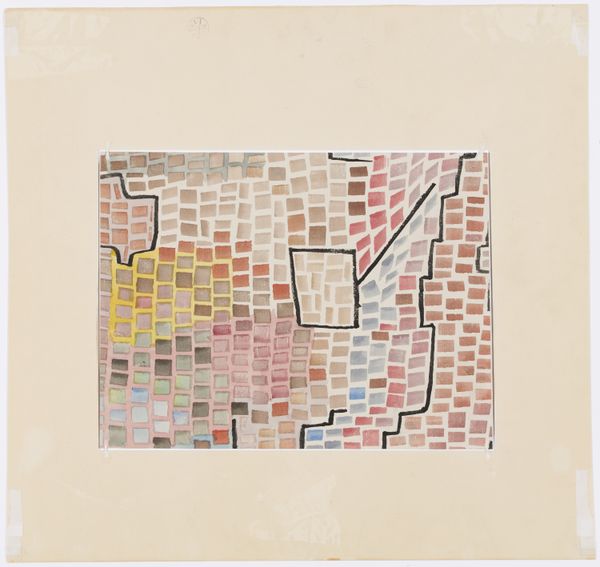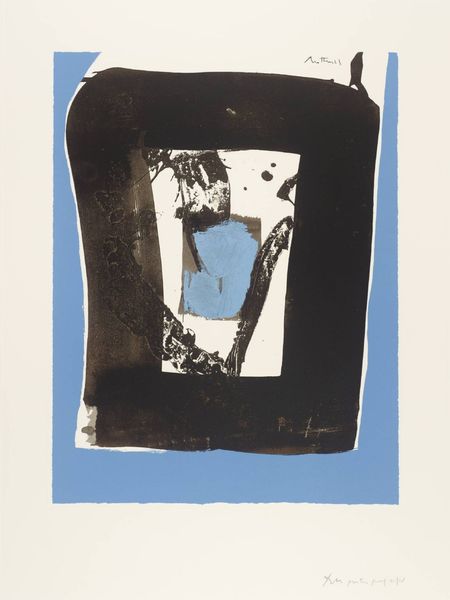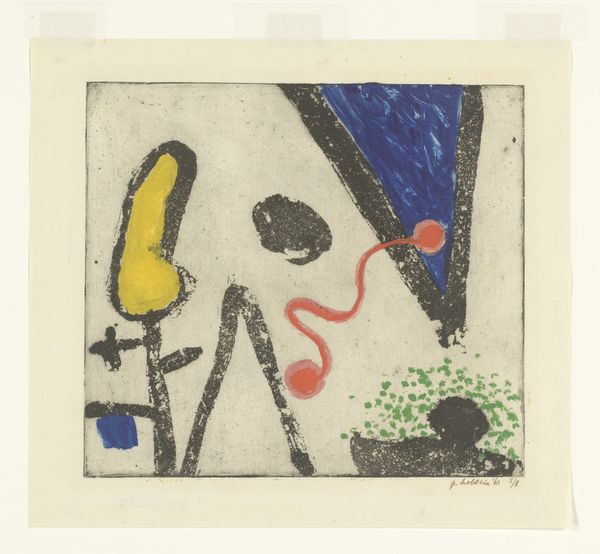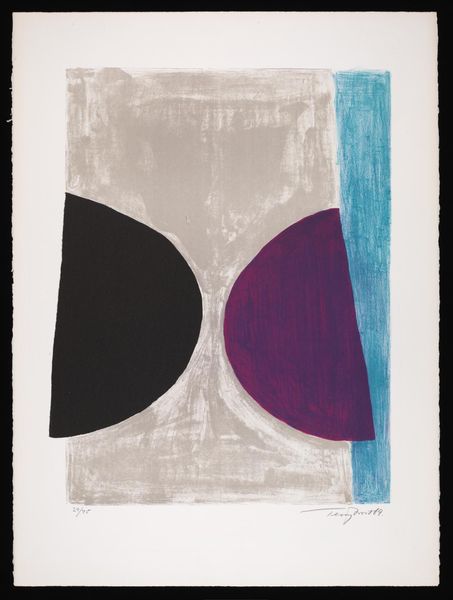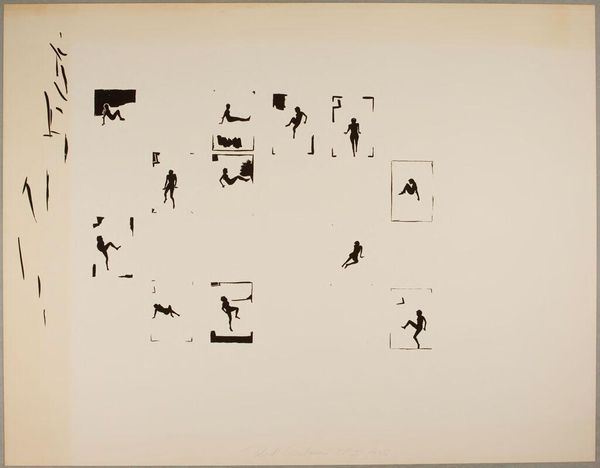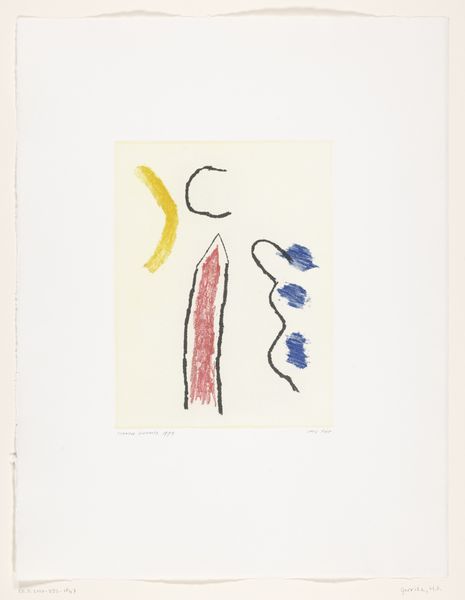
drawing, print, paper, ink
#
drawing
#
ink paper printed
# print
#
figuration
#
paper
#
ink
#
geometric
Dimensions: height 560 mm, width 780 mm, height 195 mm, width 543 mm
Copyright: Rijks Museum: Open Domain
Editor: So, here we have "Man en Vogel" – "Man and Bird" – a 1984 print by Harrie Gerritz, done with ink on paper. The three framed images have a very elemental, almost childlike feel. What do you see in this piece? Curator: Well, the seemingly simple forms, framed as they are, bring to mind institutional attempts to categorize and understand the world. Think about early anthropological displays - isolated artifacts neatly presented. Do you think Gerritz is critiquing that process? Editor: It’s possible. I can see how the detached presentation makes it feel analytical rather than expressive. Curator: Exactly. And consider the themes: man, bird, geometric shapes. These are fundamental elements of our visual language. But Gerritz places them in dialogue, almost as separate case studies. This relates, I believe, to the broader historical context of post-war art, specifically an examination of symbols and their inherent power. The image recalls children's educational toys, and that’s intriguing considering the print’s clear investment in socio-political concepts. How do you interpret the stark contrast in colours within each frame? Editor: Maybe that reinforces that feeling of deconstruction? Like separating different aspects of an idea to see how they interact? Curator: Precisely. It's as if Gerritz invites us to examine the politics embedded within even the most basic visual components of our lives. It speaks to how society, through institutions like museums, can dissect and reassemble meaning. Editor: I never thought about how the framing and simple images could be a commentary on institutional control. That’s a completely different way to look at it! Curator: Seeing art as a product of history is all about asking who has the power to define it. That said, you had a really solid read of the mood, and the child-like element, when you first saw it. Now, it can serve as a way to reconsider how a given era has influenced it.
Comments
No comments
Be the first to comment and join the conversation on the ultimate creative platform.
